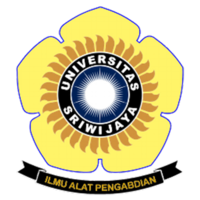Pemanfaatan Tepung Tapioka sebagai Alternatif Subsitusi Molase dalam Budidaya Ikan Nila Sistem Bioflok di Lahan Suboptimal
Abstract
Aswardi A, Gevira Z, Cindy C, Putri MD, Putri FH, Taqwa FH. 2020. Pemanfaatan Tepung Tapioka sebagai Alternatif Subsitusi Molase dalam Budidaya Ikan Nila Sistem Bioflok. In: Herlinda S et al. (Eds.), Prosiding Seminar Nasional Lahan Suboptimal ke-8 Tahun 2020, Palembang 20 Oktober 2020. pp. xxx. Palembang: Penerbit & Percetakan Universitas Sriwijaya (UNSRI).
The need for tilapia commodities is increasing globally causing the fish cultivation technology to be applied increasingly intensively due to the increasingly limited availability of cultivated land. The purpose of this study is to focus on intensifying the production of tilapia aquaculture with biofloc systems on suboptimal land with an alternative carbon source in the form of tapioca flour, so that it is expected that there will be an increase in the productivity and profit of fish cultivators on suboptimal land. Intensive cultivation of tilapia (Oreochromis niloticus) with increasing stocking density and using a biofloc system in suboptimal land is one alternative that can be applied to increase cultivation productivity and overcome the limitations of the cultivated land. The biofloc system can be applied because it can convert the ammonia waste in the culture medium into microbial biomass which can be used as natural food with the help of heterotrophic bacteria. The acceleration of activity of these heterotrophic bacteria is determined by the use of probiotics as a source of nutrition, where one of the commonly used carbon sources is molasses. However, the molasses number is limited, and does not determine the continuity of its production because competition with other industrial needs causes the need for an alternative carbon source substitution. One of the potential substitutes for molasses is tapioca flour, because of its relatively affordable price and abundant availability. The addition of tapioca flour in molasses substitution can provide a good substrate for the development and growth of microorganisms and bacteria in the biofloc system, so that it will support fish growth and the immune response tilapia with a C/N ratio of 15.
The need for tilapia commodities is increasing globally causing the fish cultivation technology to be applied increasingly intensively due to the increasingly limited availability of cultivated land. The purpose of this study is to focus on intensifying the production of tilapia aquaculture with biofloc systems on suboptimal land with an alternative carbon source in the form of tapioca flour, so that it is expected that there will be an increase in the productivity and profit of fish cultivators on suboptimal land. Intensive cultivation of tilapia (Oreochromis niloticus) with increasing stocking density and using a biofloc system in suboptimal land is one alternative that can be applied to increase cultivation productivity and overcome the limitations of the cultivated land. The biofloc system can be applied because it can convert the ammonia waste in the culture medium into microbial biomass which can be used as natural food with the help of heterotrophic bacteria. The acceleration of activity of these heterotrophic bacteria is determined by the use of probiotics as a source of nutrition, where one of the commonly used carbon sources is molasses. However, the molasses number is limited, and does not determine the continuity of its production because competition with other industrial needs causes the need for an alternative carbon source substitution. One of the potential substitutes for molasses is tapioca flour, because of its relatively affordable price and abundant availability. The addition of tapioca flour in molasses substitution can provide a good substrate for the development and growth of microorganisms and bacteria in the biofloc system, so that it will support fish growth and the immune response tilapia with a C/N ratio of 15.
Keywords
carbon source, cultivation, intensive
Full Text:
PDFArticle Metrics
Abstract view : 1276 timesPDF - 1914 times
Refbacks
- There are currently no refbacks.

